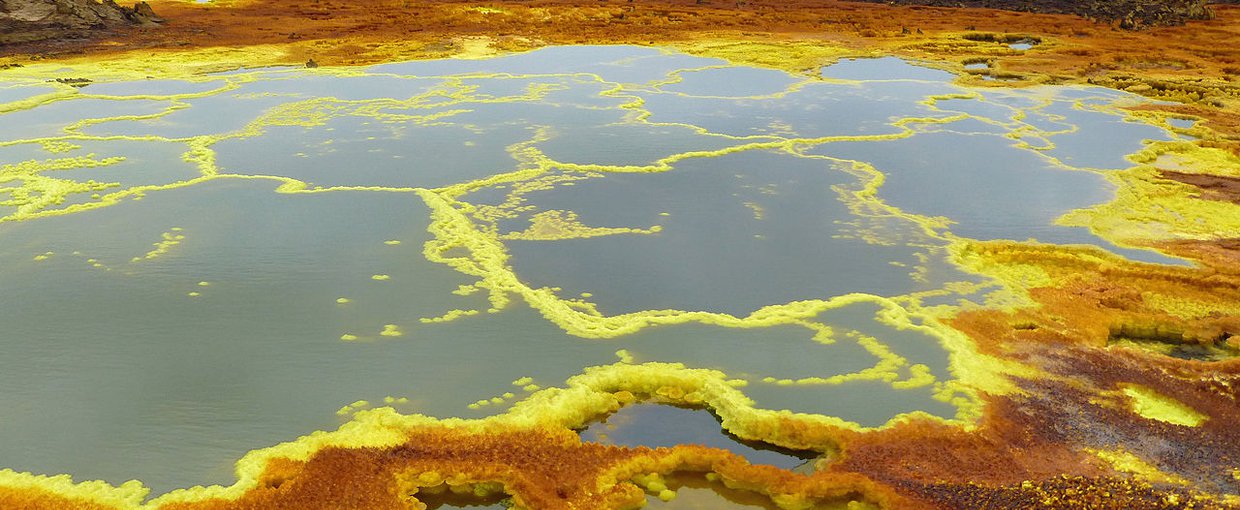
For the first time, a team of scientists has identified microbes living in one of the harshest, least-studied natural environments on Earth. Ethiopia’s Danakil Depression is located on the Horn of Africa and is among the hottest and driest places on Earth. The area also has two highly active volcanoes, molten lava just beneath the surface, and acid ponds with an average pH of 0.2. At times, scientists are forced to wear gas masks when exploring Danakil due to hydrogen sulphide gas and chlorine vapour in the air.
Since 2013, scientists from a consortium called Europlanet have been studying Danakil in order to determine whether or not this dramatic landscape could support habitats for life. Earlier this year, the team reported the discovery of DNA from ‘polyextremophiles.’ One sample site is a pool with organisms living at a pH of 0, which could set a new record for life in an acidic environment.
A feature from BBC Future discusses the discovery in detail and can be found here. In the article, team member Barbara Cavalazzi of the University of Bologna in Italy discusses the challenges of working in Danakil and the incredible microorganisms she has found there.
Barbara Cavalazzi is an assistant professor in the Department of Biological, Geological, and Environmental Sciences at the University of Bologna. She specializes in astrobiology research and, while at Portland State University in 2008, was a Project Leader for the Lewis and Clark Fund in Exploration and Field Research in Astrobiology.
The American Philosophical Society and NASA Astrobiology partnered in 2005 to promote the continued exploration of the world around us through a program of research grants in support of astrobiological field studies undertaken by graduate students, postdoctoral students, and early career scientists who are affiliated with U.S. institutions. The Lewis and Clark Fund for Exploration and Field Research in Astrobiology is designed for field studies in any area of astrobiology research. Grants may be used for travel and related expenses, including field equipment, up to $5,000. For more information, visit: https://astrobiology.nasa.gov/funding/lewis-and-clark/.
